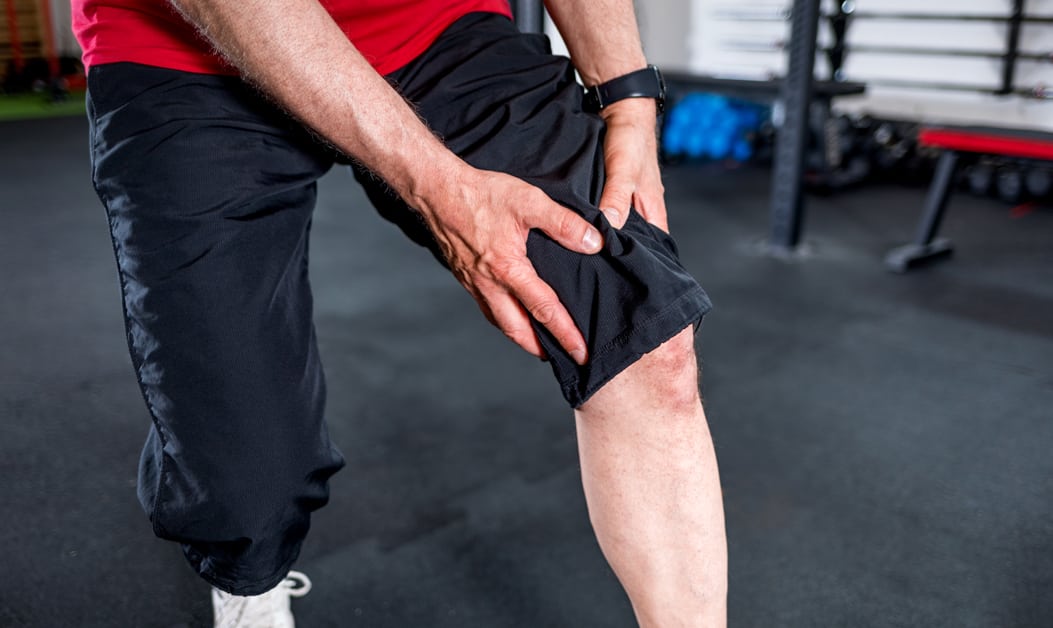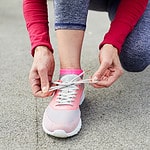Benefits of Exercise for Arthritis Knee Pain
Exercise is a great way to treat arthritis knee pain. It helps keep joints flexible, strengthens muscles and improves balance and coordination. Plus, it increases your general well-being and quality of life.
Let’s explore the advantages of exercise for arthritis in the knees and the best low-impact exercises for people with chronic pain:
Improved joint mobility
Exercising an arthritic knee can help improve joint mobility and stability. Reduced pain is a result of movement, so stretching or walking – a low-impact exercise – can reduce stiffness and inflammation. Swimming and water aerobics are also beneficial.
Strengthening workouts with weights, elastic bands, or free weights can add muscle strength and support weakened joints. This improves mobility in the knee and surrounding joints. Increased joint mobility boosts blood flow and provides relief from arthritic pain while maintaining stability at lower intensity.
Increased strength and stability
Exercising with arthritis in the knee can bring strength and stability to the joints. Strong muscles around the joint help to prevent and reduce pain. Low-impact exercises build muscles without putting stress on the joint’s range of motion.
Aerobic activities, like walking, swimming, or biking, and strength-building exercises, like weights or resistance bands, are great for those with arthritic knees. They help boost fitness and ease the discomfort. Stretches also increase flexibility and reduce pain during movement.
Working with a physical therapist is a good idea if the pain is severe. They can create an exercise plan that fits an individual’s needs. This includes
- movements that target weak spots
- stretches for different conditions
This kind of customization helps to manage arthritis knee pain.
Reduced inflammation
Exercise can reduce inflammation in joints and make movement and pain easier. A study in The American Journal of Physical Medicine & Rehabilitation showed that exercise can lower the inflammatory marker C-reactive protein (CRP) for people with osteoarthritis knee pain.
Aerobic exercise is ideal for those with arthritis. This is because it helps circulation in the body with repetitive movements. The increase in circulation brings oxygen to joints and muscles and takes away lactic acid which stops joints from healing. Swimming is great as it is easy on weight bearing joints and still gives cardiovascular benefits.
Stretching is also a beneficial exercise for arthritis sufferers. It can reduce pain and improve joint range of motion. Stretching helps circulate blood and oxygen to sore joints and muscles. It also increases flexibility which can be impeded by inflammation. Speak to a doctor or physical therapist about stretching sessions to help with arthritis knee pain.
Low-Impact Exercises for Arthritis Knee Pain
The agony of knee pain caused by arthritis can be unbearable. The good news? There are some amazing low-impact exercises you can do to lessen the pain and boost your flexibility. These exercises won’t put too much pressure on the knee joint, so you don’t have to stress about it getting worse.
Let’s get into the specifics and talk about what the best exercises are for arthritis knee pain:
Swimming
Swimming is a wonderful form of aerobic exercise – low impact on the joints! The buoyancy of the water supports and cushions your body. This allows for natural movements, decreasing stress and inflammation in arthritic knees.
It’s not just relieving pain though – swimming can help to improve strength, coordination, flexibility and endurance. This is important for mobility and activity. Plus, in a temperature-controlled environment, it can improve circulation of blood flow in the joints.
To get the most out of swimming for arthritis, find your skill level. Start in the pool or open water and build confidence. Then select exercises that suit you best – like sprints or kickboxing, instead of long-distance swims. Maintain proper technique and you’ll get great results without overstressing the joints.
Walking
Walking is a great, low-impact exercise for knee pain caused by arthritis. It increases flexibility, mobility and strengthens the muscles near the knee without straining them. It also reduces swelling and improves balance and coordination.
Start slowly when you’re walking. Begin with 10 minutes, 3 times a day. Incrementally increase the time, intensity and speed as you become more experienced. If you experience any pain or stiffness, stop or slow down until the discomfort subsides.
Wear comfortable shoes with good shock absorption to reduce knee strain and support your feet and ankles. Consider using an activity tracker like Fitbit or Apple Watch to monitor how far you walk each day.
Cycling
Cycling is great if you have arthritis and want to help your joints! It’s easier on them than walking, jogging, or running. Stationary cycling machines are also good for minimizing joint impact while still getting a workout.
If you cycle outside, start slowly and adjust your speed as needed. Fit your bike for good posture and maximum efficiency, and lower the seat if it’s too high. Lastly, use the right gears for different terrain. Lower gears create less torque and stronger leg muscles, which helps your knees in the long run!
Yoga
Yoga is a form of exercise that is low-impact. It focuses on stretching and strengthening the body. It promotes balance, coordination and flexibility. A study showed that yoga can help lessen arthritis symptoms in people with knee pain.
You can tailor yoga poses for any level of fitness. From gentle stretches and relaxation for those with limited mobility. To more strenuous poses for those wanting more physical challenges.
There are special yoga exercises for those with arthritis. These promote strength and flexibility while reducing joint stiffness and pain. Such as Downward Dog, Warrior I, Cat-Cow Pose and Eagle Pose. Plus, Chair Yoga or Restorative Yoga to help further facilitate a therapeutic practice.
Yoga at home can help with attention management. This is because the mind wanders less. Resulting in improved focus and extended concentrative ability. Plus, increased breath awareness gained through regular practice can reduce stress levels. It can also lower blood pressure levels and reduce negative emotions like depression or anxiety.
Safety Tips for Exercising with Arthritis Knee Pain
Exercising with arthritis knee pain? Sure – it’s possible! But, you must be careful. Chat with your doctor first, and pick low-impact exercises.
Here are some safety tips:
- Consider the pain,
- warm up before and after, and take breaks if needed.
- Use proper form and take it slow.
- And, don’t forget to stretch!
Warm up before exercise
Before beginning any exercise, it’s essential to warm up and get your muscles, joints, and tendons ready. Heating your muscles and joints increases circulation and lubricates your joints, providing them with the necessary nourishment.
To warm up, do dynamic stretching or easy activities such as walking or low-impact aerobics for 5-10 minutes. This stretching should be tailored to the activity you’ll be doing, e.g. quadriceps for a lower body workout.
You could also try foam rolling as part of your warm-up to reduce muscle tension before exercising. It’s a form of self-massage that helps loosen tightness in muscle tissue and improve joint range of motion.
Finally, end with static stretches. Hold each stretch for 15-30 seconds to prepare your muscles and tendons for the activity. A proper warm-up can aid in reducing pain and improving joint health when exercising with arthritis knee pain!
Pace yourself
Pay attention to your body when exercising with arthritis knee pain. Don’t overdo it ’cause pain tells you something’s wrong. Start slow and do each exercise for a short time. Increase the intensity and duration as your body gets used to the movement. Set realistic goals, decide what intensity is best for you. Don’t challenge yourself too much, it can lead to more pain or injury.
It might help to set a timer and do the exercises only for a certain amount of time each day. If an exercise causes intense pain, stop and talk to a healthcare provider. Before starting any physical activity program, get advice from your doctor about which exercises are right for you:
- Set a timer and do the exercises only for a certain amount of time each day.
- If an exercise causes intense pain, stop and talk to a healthcare provider.
- Get advice from your doctor about which exercises are right for you.
Listen to your body
Listen to your body – this is key when exercising with chronic knee pain due to arthritis. Find an activity that improves your condition, manages symptoms, and strengthens problem areas with minimal discomfort. Everyone’s experience with arthritis-related knee pain and intensity of symptoms is unique. Don’t strain beyond your capability – take regular breaks! Remember to check with a health care provider for clearance before beginning any exercise program.
When it comes to safety tips:
- Choose activities like walking, swimming, or stationary biking that don’t stress the knee joint too much.
- Prepare adequately if participating in a strength training or high impact sport like running. Start slow and gradually increase effort.
- Stretch gently the calves, quads and hamstrings, paying attention to lower body muscles without creating tension or strain.
- Look out for warning signs such as swelling and/or increased pain – if these occur, rest until they are alleviated.
- If feeling sore after exercise, use cold compression therapy followed by gentle stretching.
Use appropriate equipment
When dealing with arthritis knee pain, it’s vital to use the right equipment when exercising. Going overboard with weights or unsuitable equipment could cause injury.
- A weightlifting belt and weight vest can give your joints support and reduce stress on your body.
- Get sneakers that have supportive cushioning to protect your joints and make physical activity more comfortable.
- Stability balls and exercise bands are good for low-impact stuff like stretching and resistance training. They don’t cost much but can help with pain if used properly.
Before getting active, warm up for 5-10 minutes to boost circulation and ease muscle tension. After exercising, cool down by stretching the muscles that were worked. This may help control inflammation from “overusing” your joints.
Additional Resources
When thinking of how to manage knee pain from arthritis, exercise may not be the top idea. However, it can help lessen swelling, stiffness and boost muscle strength. To make an exercise plan that fits your exact needs, a physical therapist is the way to go. Other resources are also accessible to give you a start. Let’s look at some of these choices:
- Physical therapist
- Online exercise programs
- Fitness classes
- Yoga and tai chi
- Low-impact sports
Arthritis Foundation
The Arthritis Foundation is a non-profit dedicated to understanding arthritis and related conditions. They help those living with these medical issues by providing advice and support. Their range of programs include physical therapy, medication advice, and connecting people with other patients.
They offer detailed exercises to help with arthritis pain. On their website, they provide low-impact exercises, like water aerobics, Nordic walking and strength training.
Their Exercise Program Finder tool helps you find classes near you that are tailored for those with joint pain, such as tai chi or yoga.
Physical Therapy Resources
Physical therapy is a great low-impact treatment for those with arthritis. Exercise and stretching can help reduce joint pain. It is important to have a qualified physical therapist.
For an at-home routine, there are lots of resources:
- Books and videos can provide instructions for exercises.
- Websites such as Arthritis Today or Arthritis Foundation can give self-management techniques and wellness tips.
- Podcasts or blogs about physical therapy for arthritis are also available to give motivation.
Online Support Groups
Managing arthritis can be tough. To feel supported, it’s smart to connect with other people who understand. Online support groups are a great option! Research shows that people who join these groups experience less depression, anxiety, fatigue and disability than those who don’t.
It’s also helpful to look for specialty arthritis organizations or networks. Many of these have social media accounts or forums where members can share stories and resources. If you can’t find a group or organization that works for you, talk to your doctor about local programs they may recommend.
Frequently Asked Questions
Q: What are some low-impact exercises for arthritis knee pain?
A: Low-impact exercises such as swimming, biking, and walking are great options for people with arthritis knee pain. Strength training exercises with light weights, yoga, and tai chi are other great low-impact exercises that can help reduce pain and improve flexibility.
Q: Are there any exercises to avoid with arthritis knee pain?
A: High-impact exercises such as running, jumping, and tennis should generally be avoided by people with arthritis knee pain. These activities can put extra strain on already compromised joints, leading to further pain and discomfort.
Q: How often should I exercise with arthritis knee pain?
A: It is generally recommended that people with arthritis knee pain exercise for 30 minutes on most days of the week. However, it is important to listen to your body and not overexert yourself. If you are in pain or uncomfortable, it is best to rest and speak to your doctor.





